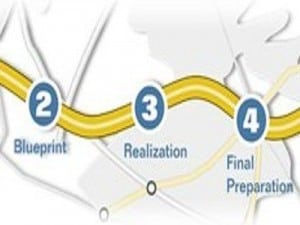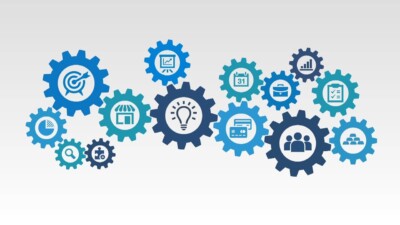 Tailored ERP Roadmap: Adapting to Organizational Needs
Tailored ERP Roadmap: Adapting to Organizational Needs
This segment serves to unveil the secrets to crafting an ERP strategy that is not only effective, but also tailor-made to address the distinctive challenges and opportunities that define individual businesses. In recognizing the intricacies of various industries, sectors, and company structures, we can see that a tailored ERP roadmap is essential for unlocking the full potential of enterprise resource planning.
To undergo this endeavor, we need to understand and articulate the specific requirements of each organization. The team needs to comprehensively analyze existing workflows, operational intricacies, and unique business objectives. By delving into the granular details of how a company functions, decision-makers can discern the critical touchpoints where ERP interventions can yield optimal results.
The customization of ERP goals and strategies is not merely a cosmetic adjustment, but a strategic imperative. The team needs to align the technological roadmap with the broader organizational vision, ensuring that every aspect of ERP implementation contributes meaningfully to overarching business objectives. This nuanced approach fosters an ERP strategy that is not just a tool but an integral component of the organizational DNA.
Furthermore, the tailored ERP roadmap delves into the intricacies of user adoption and engagement. The success of any ERP system hinges on the willingness and enthusiasm of its users, so ERP processes must be intuitive, user-friendly, and seamlessly integrated into daily workflows. Employee training, change management initiatives, and ongoing support mechanisms become integral components of this tailored approach.
Below are the steps businesses should take to create a quality, tailored roadmap:
1 . Conduct a Comprehensive Business Analysis:
- Evaluate current business processes, workflows, and operational challenges.
- Identify areas that require improvement or optimization.
- Engage with key stakeholders to gather insights into existing pain points and requirements.
- Define Clear Business Objectives:
- Clearly articulate short-term and long-term business goals.
- Align ERP objectives with broader organizational strategies.
- Prioritize objectives based on urgency and impact on business performance.
- Engage Key Stakeholders:
- Involve representatives from various departments and functions.
- Gather input from end-users to understand their specific needs.
- Ensure representation from IT, finance, operations, and other relevant departments.
- Assess Current IT Infrastructure:
- Evaluate the existing IT ecosystem, including hardware, software, and network capabilities.
- Identify any legacy systems that need integration or replacement.
- Consider scalability and flexibility requirements for future growth.
- Evaluate Industry-Specific Requirements:
- Understand industry-specific compliance standards and regulations.
- Research ERP features tailored to the nuances of the business sector.
- Consider best practices within the industry for ERP implementation.
- Compare Customization vs. Out-of-the-Box Solutions:
- Assess the impact of customization on implementation timelines and costs.
- Prioritize critical features that require customization for optimal functionality.
- Consider User Experience and Training:
- Evaluate the technical proficiency of end-users within the organization.
- Choose an ERP solution with an intuitive interface to minimize training efforts.
- Plan for comprehensive training programs to ensure effective system adoption.
- Define Integration Requirements:
- Identify existing and future applications that need to integrate with the ERP.
- Ensure seamless data flow between ERP modules and other business systems.
- Consider APIs and middleware solutions for smooth integrations.
- Evaluate Cloud vs. On-Premises Options:
- Assess the benefits and drawbacks of cloud-based ERP solutions.
- Consider factors such as data security, accessibility, and cost implications.
- Evaluate the scalability and maintenance aspects of on-premises solutions.
- Encourage continuous Feedback and Iteration:
- Establish a feedback loop with key stakeholders throughout the planning process.
- Be open to revising the ERP roadmap based on changing business needs.
- Plan for periodic reviews and adjustments to ensure ongoing alignment with business objectives.
Continuous Improvement in ERP Goals
The journey doesn’t conclude with the initial setting and achievement of goals. Instead, businesses need to embrace a philosophy of continuous improvement, viewing ERP goals as dynamic entities that require regular evaluation, refinement, and adaptation. Recognizing that the business environment is in a perpetual state of evolution, organizations must adopt an iterative approach to their ERP goals to stay agile, responsive, and aligned with emerging challenges and opportunities.
The heart of this perspective lies in cultivating a corporate culture that values learning, innovation, and adaptability. Organizations that commit to continuous improvement acknowledge that the effectiveness of ERP goals is not static but subject to change based on internal and external factors. This mindset shift prompts regular assessments of the ERP landscape, inviting stakeholders to revisit and reassess their goals in light of new market trends, technological advancements, and shifting organizational priorities.
An integral component of the continuous improvement ethos is the establishment of robust feedback mechanisms. Organizations must create avenues for stakeholders at all levels to provide insights, share experiences, and suggest refinements to existing ERP goals. This open communication fosters a sense of collective ownership over the ERP strategy, encouraging employees to contribute their perspectives to propel the ongoing enhancement of organizational processes.
Moreover, the iterative approach extends to the monitoring and utilization of key performance indicators (KPIs). Regularly evaluating KPIs allows organizations to gauge the effectiveness of their ERP goals in real-time, identifying areas of success and areas that require adjustment. This proactive stance enables decision-makers to swiftly respond to challenges, refine strategies, and capitalize on emerging opportunities, ensuring that the ERP goals remain aligned with the overarching business objectives.
Conclusion
Overall, establishing and maintaining ERP goals can require significant time and investment. However, this step is vital to ensuring a successful implementation. When you are planning your project, consider the following questions as you establish your goals:
- What are our Business Objectives?
- Define the overarching business objectives that the ERP implementation aims to achieve.
- Align ERP goals with broader organizational goals to ensure strategic coherence.
- Consider short-term and long-term objectives, focusing on areas such as efficiency, growth, and customer satisfaction.
- Which Pain Points Need Addressing?
- Identify current pain points and challenges within existing business processes.
- Determine specific areas where ERP solutions can provide tangible improvements.
- Prioritize goals that directly address operational inefficiencies and bottlenecks.
- How Will ERP Support Growth and Scalability?
- Assess the scalability requirements of the business over the coming years.
- Establish ERP goals that support future growth, expansion into new markets, or diversification of product/service offerings.
- Consider the flexibility of the ERP solution to adapt to changing business needs.
- What Key Performance Indicators (KPIs) Will Define Success?
- Clearly define measurable KPIs that will be used to evaluate the success of the ERP implementation.
- Align KPIs with strategic goals, such as improved productivity, cost reduction, or enhanced customer satisfaction.
- Establish benchmarks and targets to track progress over time.
- How Will ERP Enhance Collaboration and Communication?
- Evaluate the current state of collaboration and communication within the organization.
- Establish goals related to improved collaboration across departments and teams.
- Consider how the ERP solution will facilitate real-time information sharing and decision-making.
- What is the Timeline and Implementation Strategy?
- Define a realistic timeline for the ERP implementation project.
- Establish phased goals and milestones to track progress during different stages.
- Develop a comprehensive implementation strategy, including resource allocation, training programs, and change management initiatives.
For more insights into the ERP goal planning process, take a look at our previously published articles:





